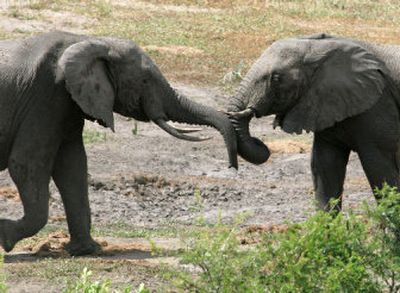South African elephant plan draws protest

JOHANNESBURG, South Africa – Small farmers and villagers here see them as cunning, destructive and dangerous beasts whose very name conjures up death. In the West, elephants are perhaps the most beloved of the big game species and tourists fly thousands of miles just to see one.
So South Africa’s proposal, unveiled Wednesday, to thin elephant herds by methods that include shooting them was bound to spark controversy.
Regulations announced by South African Environmental Affairs Minister Marthinus van Schalkwyk would affect thousands of elephants, and include contraception measures, use of aerial sharpshooters and relocation, to bring the herds back to manageable levels.
Contraception methods include drugs delivered by dart to female elephants, and vasectomies for males.
“Some (methods), such as culling or contraception, I would personally have preferred not to consider, but I am persuaded that this option has a potential role to play under different circumstances,” van Schalkwyk said. He said that, if approved, the regulations would not lead to wholesale elephant slaughter.
Alarmed at a pachyderm population that has swelled to 20,000, South African authorities have been mulling the issue since 2005, amid warnings that shooting elephants in national parks could trigger angry campaigns by animal rights groups, damage South Africa’s international reputation or spark a tourist boycott.
The government has not released any figure on the number of elephants potentially affected. Since 1995, the elephant population in Kruger National Park, in northeastern South Africa, has grown from around 8,000, considered a manageable population, to almost 14,000.
Authorities have cautioned against assuming that herds would be culled based on those figures.
South Africa slaughtered more than 14,562 elephants from 1967 to 1994 but stopped after international pressure. The government is allowing about two months for public commentary before finalizing its decision on how to manage the herds.
Elephants eat 300 to 600 pounds of grasses and leaves a day. They wreak havoc in fragile landscapes, uprooting trees or tearing off branches for food. In some Southern African countries like Zambia, they trample crops and attack villagers, with several killings there each year.
Elephant populations in Africa plummeted sharply in the ‘70s and ‘80s, due to poaching for ivory. But after the ban on international ivory trade was introduced in 1989, they bounced back. There are now an estimated 250,000 to 300,000 elephants in Southern Africa.